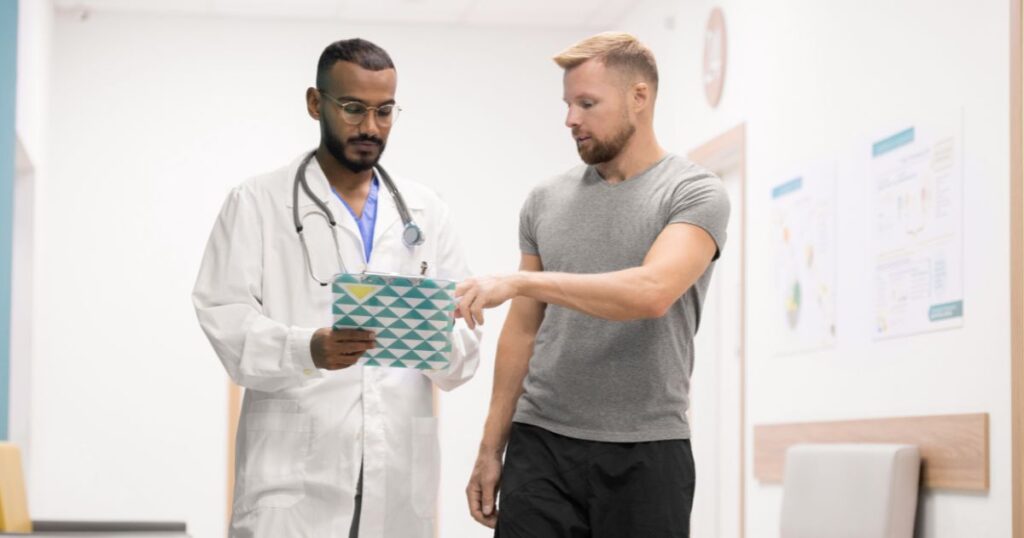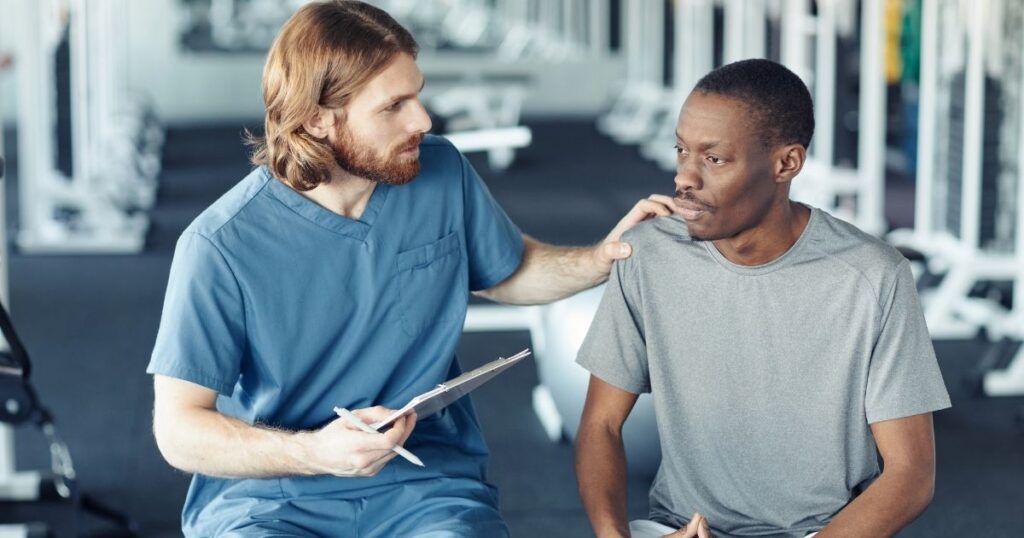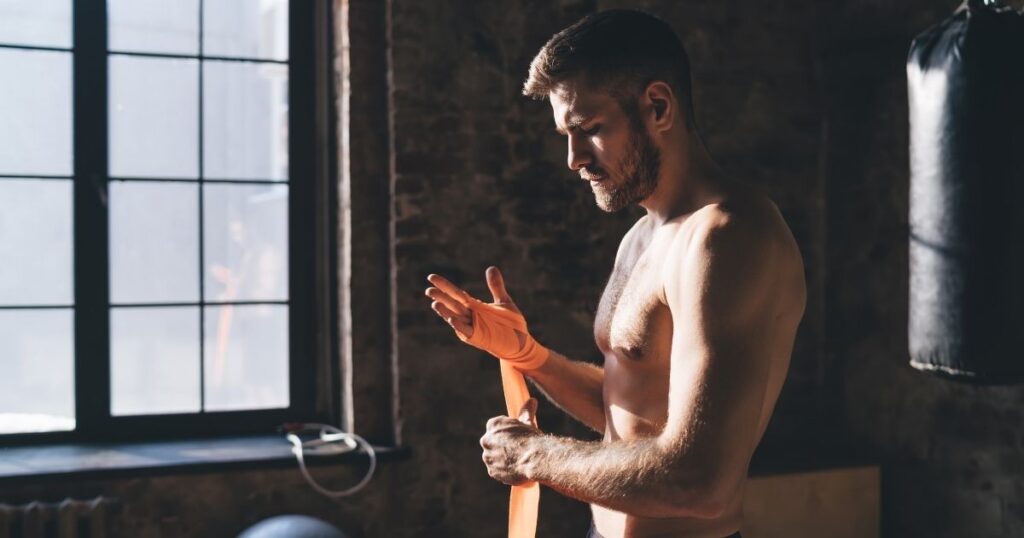Why Healthcare and Health Insurance for Athletes is a Concern
In this post, we’ll discuss the barriers to athlete healthcare and many of the lesser talked about problems that are encountered on a daily basis. The number of National College Athletic Association (NCAA) student-athletes competing in championship sports increased by 17% since 2010 to reach an all-time high of 503,623 last year.

Healthcare and Health Insurance for Athletes
Athletes spend decades turning their bodies into finely honed tools for one specific motion. Regardless of whether that motion is throwing a baseball, landing a backflip, or spiking a volleyball, athletes push their bodies to the extreme of possibilities. While playing in college or professionally, healthcare and health insurance are typically included in most large training programs. But what happens after that health insurance window is closed?
For athletes who are fortunate enough to have professional playing time, healthcare has become a significant part of the benefits packages included in collective bargaining agreements. While these benefits have increased significantly for the pros, they are far from reasonable. For retired NFL players, for example, coverage only extends 5-years after your career ends. After that 5-years, the NFL plan can cost $35,000 a year.
And while most professional athletes will play in a unionized setting, many professionals are in charge of their own expenses. Tennis players and golfers are the most high-profile exceptions, footing the bill for their own travel, lodging, training, and coaching.
Why Athletic Healthcare Matters
Stepping into a new world with NCAA changes around ‘name, image and likeness’ or NIL, the National Collegiate Athletic Association (NCAA) has also highlighted the importance of healthcare for athletes.
While the NCAA has required member schools to provide athletes some form of accidental injury insurance coverage, a 2024 change also gives a post-eligibility injury insurance coverage option for 2-years after the college experience. This expansion was still criticized by many news outlets for not being substantial enough for football programs at Universities.
Injuries are an unfortunate aspect of competition that is unavoidable. A report by the Centers for Disease Control and Prevention estimated that between 2009-14 there were about 210,700 injuries on average per year among the roughly 478,900 college athletes participating in NCAA sports.
Injuries can obviously vary from muscle pulls and sprains to more serious injuries – even injuries that require long-term treatment. For problems like this, it can be a complex issue of determining insurance coverage, securing care, and negotiating with healthcare providers.

The Challenge of Accessing Athletic Healthcare
The largest point we hope you’ll take away from this blog is how long athletes will deal with healthcare situations. In the Olympics, for example, the average athlete age is 27. That means an injury or medical problem is something they may have to face for decades. An injured college athlete may have to seek assistance for 60 years after playing their last game.
Athletes also require a variety of physical assistance that the rest of us can escape. Former athletes live longer on average than their non-athlete counterparts but have elevated rates of musculoskeletal injury, osteoarthritis, and joint replacement.
Former athletes also have differing needs when accessing healthcare, and not just because of managing prior injuries. Many athletes need assistance to accommodate their lower energy needs after retirement and some struggle to find new exercises and activities with less body impact. This is made even more difficult for collision athletes, where 73% report having sustained chronic injuries.
Former competitors also face a need for assistance with transitioning their diet and supplements back to a regular routine. Needing to slim down, bulk up, reconfigure a diet, or change and phase out supplements is all best done under the close eye of a medical professional.
Common Athletic Injuries
The most common athletic injuries are focused on the joints. Here is a look at those affecting the most patients.
Patellofemoral Syndrome
More commonly known as ‘Runners Knee,’ patellofemoral syndrome is the most common athletic injury. It is most commonly an overuse problem but can also be caused by impact or trauma. The good news with Runners Knee is that stretching, ice, strengthening and rest can help clear it up from the problem list.
Shoulder Injury
The second most common injury is the shoulder. For ‘overhead athletes,’ or those who perform with their arms in motion above them, this is extremely common. Swimmers, volleyball and basketball players are all too familiar with shoulder issues. Shoulder injury treatment can vary from rehab and strength training to reconstruction and surgery.
Tennis Elbow
Another repeated stress injury, lateral epicondylitis or ‘tennis elbow,’ is a swelling of the tendons that move your wrist backward, or away from your palm. Tennis elbow usually presents when athletes are between 20 and 30 years old and can usually be assisted with perfecting wrist form, strength training, and rest.
Strained Hamstring
Hamstrings are the most common muscle to be slightly or completely torn. Most commonly caused by muscle overloading, strained hamstrings can sideline an athlete for up to a month. The most common cause is muscle overloading, or when a small and intense burst of energy happens – like a sprinter leaving the blocks.
Sciatica
Any pain that travels via the sciatic nerve is defined as sciatica, but athletes get sciatica primarily from piriformis syndrome. Because of intense physical activity, like weight lifting, this puts strain on the piriformis muscle. The resulting inflammation can push the nerve and in some cases even herniate a disc away from the lower spine.
While these are the five most common sports-related injuries, they are obviously not the most severe. Concussions have become a prominent issue within the impact sports community and have led to a nationwide discussion about the seriousness around the issue.

Athletes and Mental Health
One positive injury change within the sports community is the willingness to discuss mental health. According to the National Institute of Health, many former athletes show signs of cognitive impairment, anxiety, depression, and alcohol misuse compared to the general population.
Any retirement presents challenges to transition, and athletes are no exception. Given their physical demands, sports careers are much shorter than others and often athletes feel ill-prepared for the decades ahead of them.
Additionally, athletes typically begin their sports enthusiasm at a young age, which builds a personality link to their physical skills. When that sport is removed from the equation it can cause a shift to redefine who that athlete is. Without competition and the drive to be better, who am I?
Weight gain from lack of competition has additional mental side effects. The increased pounds can actually lead to mood changes and athletes are less likely than the population at large to be aware of recreational sports.
The Price Of a Healthy Athlete
When watching our athletes compete, we’re filled with renewed energy and adrenaline, but for many of them, that price will be paid for many years to come.
If you include time-loss and medical costs, the costs of high-school contact sports is $19.2B and another $1.5B for colleges. That cost is passed along to all of us in higher costs, more doctor burnout, and stress on an already taxed system.
There is a US shortage of specialists, which has been accelerated by COVID-19 burnout in the medical field. The weight-time to find doctors, specialists, and physical therapists is at an all-time high, nationwide.
The Specifics of Health Insurance for Athletes
For current athletes, there is a new and emerging niche of insurance options for healthcare needs. While it is true that most student-athletes remain on their parent’s insurance, there is a new marketplace that specializes in insurance and disability plans for student-athletes.
Team USA or the US Olympic Team provider of health insurance is USOPC, which offers Elite Athlete Health Insurance (EAHI) to the Medical Assistance Fund (MAF) to the Medical Network (MN). Other companies like AHP Healthcare and US Sports Scholarships.
Recent changes in US healthcare policy make refusing ‘pre-existing conditions’ a thing of the past. Former athletes are one group that benefited greatly from the policy change.

What To Do When There’s No Health Insurance for Athletes
Lack of health insurance can be a problem for many, not just athletes. The good news is that Healthcare.gov has expanded its capabilities and interface to make health insurance shopping easier for everyone.
But unlike the general population, athletes without insurance may not have the options or coverage to get the full care that they need. Many suffer in silence with pain, fatigue, and ongoing injuries that persist.
There are limited options for many of these current and former athletes, outside of healthcare exchanges in their state. Medicare and Medicaid become a key tool to current and former athletes’ medical planning.
Medicare
Medicare is a federal insurance program available to those:
- 65 years and older (whatever their income)
- Younger than 65 years with a disability and have received Social Security Disability Insurance (SSDI) for at least 24 months
- Individuals of all ages who have end-stage renal disease (permanent kidney failure in need of dialysis or a transplant)
Medicaid
Medicaid is a state-based assistance program serving low-income people under age 65. Patients usually pay no part of costs for covered medical expenses, although a small co-payment may be required.
Each state sets its own guidelines regarding eligibility and services so you should contact your local Medicaid office directly.
The Nebraska Greats Foundation
Founded by former Nebraska Football All-American Jerry Murtaugh, the Nebraska Greats Foundation was conceived after the tragic real-life loss of Andra Franklin and David Humm to address situations just like we’ve been discussing.
The Nebraska Greats Foundation provides medical and financial assistance to in-need former athletes from Nebraska’s 16 four-year Colleges and Universities. For many athletes, this can be one of the largest stressors in their lives.
The Nebraska Greats Foundation has a team of board-certified, licensed physicians who donate their time and expertise to evaluate each applicant. They provide guidance for the foundation but also alternatives and options for each applicant based on their own circumstances. The physician’s board is also a valuable resource in identifying worthy candidates.

Healthcare For Athletes Everywhere
Hannah Tillerson is a key example of an athlete without anywhere else to turn for assistance.
Originally from Oklahoma, Hannah joined Midland University and their soccer team, even receiving a 2022 All-GPAC Honorable Mention.
Sustaining an ankle injury early in 2022 and a traumatic brain injury late in the season, Hannah’s existing medical issues with her hip were aggravated from the new strain on her ankle. Despite her attempts to play through the pain, Hannah had to retire from soccer early.
If not properly managed, these hip, ankle, and brain injuries will have profound impacts on Hannah’s ability to live a healthy life.
To ensure an optimal recovery with proper healing time, injuries like this create a huge financial burden for athletes like Hannah to overcome.
This is where the Nebraska Greats Foundation was able to step in and step up to assist. Hannah was able to offset her medical bills and offset her mounting stress around the situation.
A Helping Hand
The Nebraska Greats Foundation is a non-profit organization that provides financial assistance to former athletes and ex-athletes from Nebraska’s colleges and universities who face medical challenges.
Through this support, we can alleviate some of the mental health issues that Nebraska athletes are going through during their recovery process.
If you know of an athlete friend or family member who needs access to specific treatments and services, let us know to potentially alleviate some of the stress associated with managing these conditions.
With your help, we can make the Nebraska sports scene a safer place for our community athletes. Wondering how to help? Donate today or contact us. Most donations are tax-deductible.
